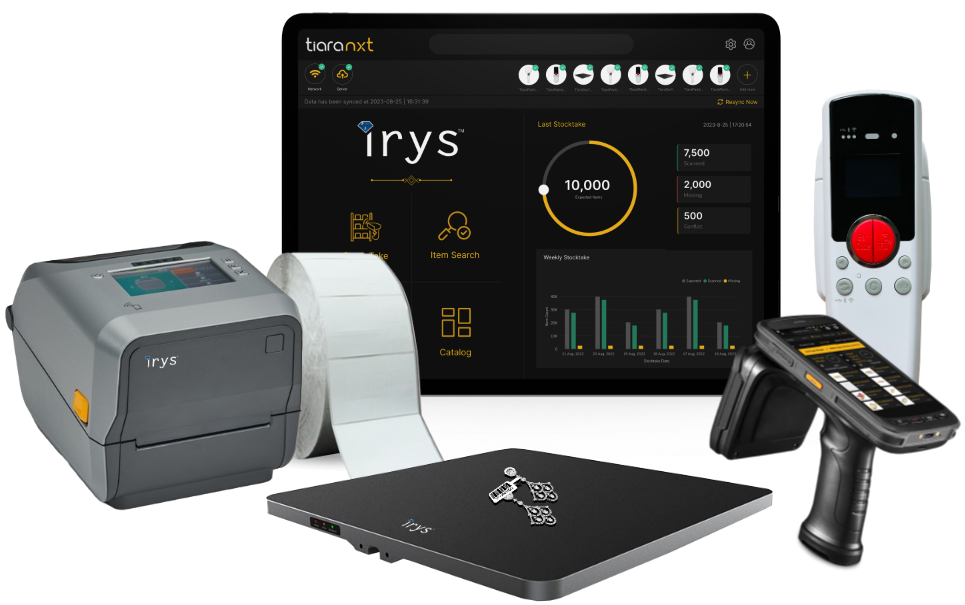The Role of RFID Technology in Modern Jewelry Management

In today’s fast-paced jewelry industry, businesses face constant challenges when it comes to tracking valuable assets, preventing theft, and maintaining accurate inventory records. Traditional methods such as manual stock counts or barcode scanning are often inefficient and prone to errors. This is where Radio Frequency Identification (RFID) technology has proven to be a game-changer.
Solutions like an RFID tag printer and RFID jewelry tags are transforming how jewelry businesses operate, making processes faster, more accurate, and more secure. This blog will explore how these tools work, their benefits, and why every modern jewelry store or distributor should consider adopting them.
Why RFID Matters for the Jewelry Industry
Jewelry businesses handle high-value products in small sizes, which makes them vulnerable to loss, misplacement, and theft. An RFID-based system provides instant visibility into stock movement, customer handling, and storage, ensuring that every item is accounted for.
Some of the biggest reasons jewelry businesses are switching to RFID include:
-
Accurate inventory tracking without manual counting.
-
Quick audits that take minutes instead of hours.
-
Theft prevention through real-time alerts.
-
Seamless integration with existing POS or ERP systems.
What is an RFID Tag Printer?
An RFID tag printer is a specialized device that prints and encodes RFID tags with essential product data. These tags can then be attached to jewelry items like rings, necklaces, or watches, allowing them to be tracked throughout the supply chain.
Key Features of RFID Tag Printers
-
Encoding Capabilities: Store unique item information, such as SKU, weight, or stone details.
-
High-Speed Printing: Print and encode hundreds of tags within minutes.
-
Customization: Create jewelry-specific tag designs for branding purposes.
-
Integration with Software: Connect seamlessly with inventory or management software.
For jewelers, this means faster tag generation and smoother tracking across all levels of operations.
Understanding RFID Jewelry Tags
RFID jewelry tags are specially designed labels that can be attached to different jewelry pieces. Unlike barcodes, these tags don’t require line-of-sight scanning and can be read in bulk by an RFID reader.
Types of RFID Jewelry Tags
-
Paper-Based Tags: Cost-effective for daily retail use.
-
Plastic or Durable Tags: Ideal for long-term tracking in warehouses.
-
Tamper-Proof Tags: Designed to prevent unauthorized removal or replacement.
These tags make it easy to perform quick stock audits and keep a real-time record of every item in your collection.
How RFID Printers and Tags Work Together
The synergy between an RFID tag printer and RFID jewelry tags is what makes RFID solutions so powerful. Here’s how the process typically works:
-
Tag Creation: The printer encodes product data onto a blank RFID jewelry tag.
-
Tagging Items: Tags are attached to jewelry items like rings or necklaces.
-
Scanning & Tracking: RFID readers pick up data from tags in real time.
-
Software Integration: Inventory management software updates stock levels automatically.
This combination drastically reduces errors and improves operational efficiency.
Benefits of Using RFID for Jewelry Businesses
1. Faster Inventory Audits
RFID systems can scan thousands of items within seconds. A task that traditionally took hours can now be completed in minutes.
2. Reduced Theft and Loss
Because RFID tags can trigger alerts when items move without authorization, jewelry businesses can significantly cut down on shrinkage.
3. Improved Accuracy
Every piece of jewelry has a unique RFID code, ensuring complete accuracy in records and reducing the risk of duplication.
4. Better Customer Service
Sales associates can instantly locate items in the store, reducing waiting times for customers and improving the shopping experience.
5. Enhanced Supply Chain Visibility
From manufacturing to retail, jewelers can monitor every movement of their products, making logistics more efficient.
Real-Life Applications of RFID in Jewelry
-
Retail Stores: Quick item lookup, theft prevention, and seamless sales integration.
-
Wholesale Distributors: Accurate tracking of shipments and reduced errors in delivery.
-
Manufacturers: End-to-end visibility from production to retail shelves.
-
Luxury Brands: Protection of high-value items with tamper-proof tags and secure tracking.
Challenges and Considerations
While RFID offers many advantages, jewelers should also consider:
-
Initial Costs: RFID printers and tags require upfront investment.
-
Training Needs: Staff may need guidance on how to use the technology effectively.
-
System Integration: Ensuring the RFID solution works with existing POS or ERP systems.
Despite these challenges, the return on investment (ROI) is significant due to the savings in time, reduced theft, and improved accuracy.
Future of RFID in Jewelry
The future of RFID in the jewelry industry looks promising. With advancements in miniaturized tags, cloud integration, and artificial intelligence, RFID systems will only become more efficient and cost-effective. Smart jewelry stores of the future will rely heavily on RFID-driven automation for everything from display management to customer personalization.
Conclusion
The combination of an RFID tag printer and RFID jewelry tags is transforming jewelry management by making inventory faster, more accurate, and more secure. Whether you are a retailer, wholesaler, or manufacturer, adopting RFID technology is no longer optional—it’s a necessity for staying competitive in today’s market.
By investing in RFID solutions, jewelry businesses can reduce operational costs, improve customer satisfaction, and ensure complete control over their valuable assets.







